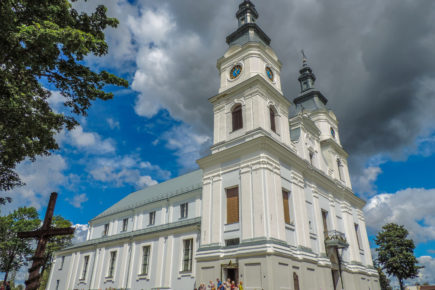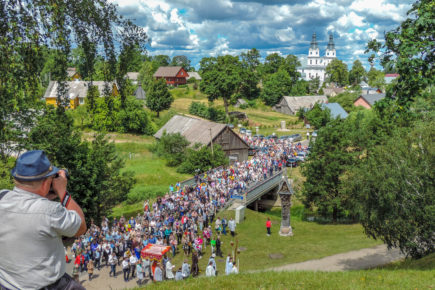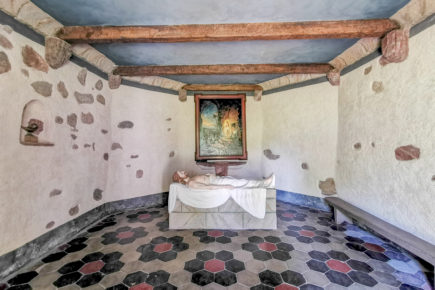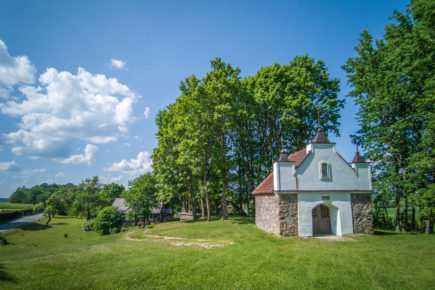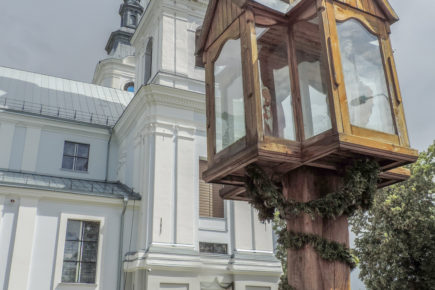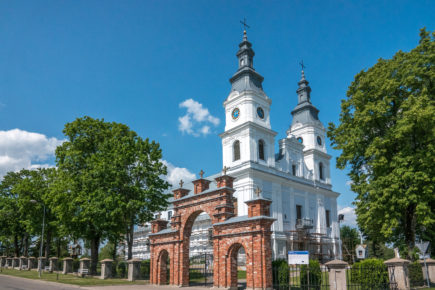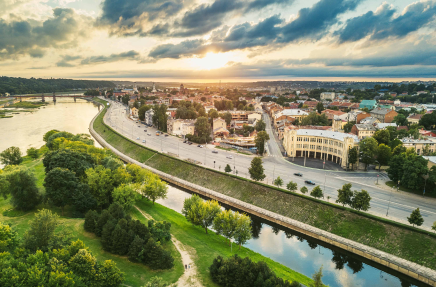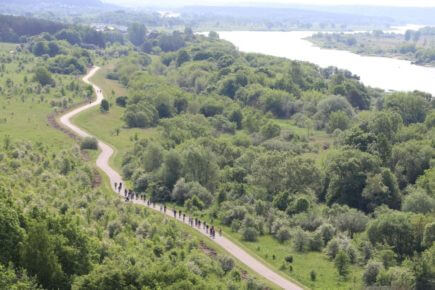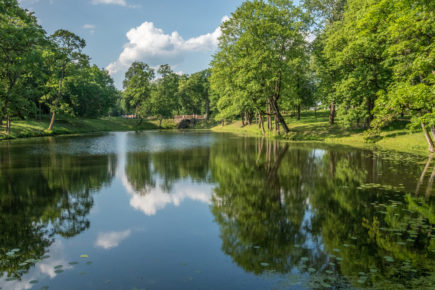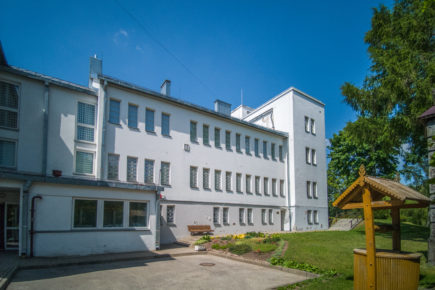The Samogitian Calvary Sanctuary is one of the most sacred places in Lithuania. It is endowed with an exceptional spirit. The Samogitian Calvary Sanctuary is home to the Basilica of the Visitation of the Virgin Mary, which is one of six basilicas in Lithuania. There are also twenty chapels of the Way of the Cross as well as a former Dominican Monastery. This area is included in the pilgrimage route of Pope John Paul II, making it an important centre for pilgrimage.
The founder of the Way of Suffering is considered to be Bishop Jurgis Tiškevičius, who headed the Samogitian Diocese in 1633–1649. Exactly when the first chapels were built is unknown. It is possible that by inviting the Dominicans to settle in Gardai, Bishop J. Tiškevičius received parishes from Pope Urban VIII for six Calvary chapels: the Last Supper, the Olive Nursery, the Beating of Christ at the Pillar, the Crown of Thorns, and the Crucifixion and the Burial of Christ. At that time, the Calvaries were probably already partially functioning. It is estimated that almost all of the existing chapels were built by 1640. It is said that Bishop J. Tiškevičius himself designated the hills and the places where the chapels were to stand and counted the steps from place to place so there were as many as Jesus took during his suffering. The bishop even sprinkled the roads with earth brought from Jerusalem. To make the area famous, he called Gardai the New Jerusalem, but the name didn’t stick, so the town was called the Samogitian Calvary.
The tradition of praying while visiting the Samogitian Calvary Way of Suffering was established under the influence of the Dominicans. One of them wrote prayers and hymns to reflect on the suffering of Christ. These songs were soon sung not only in the Calvary, but also in all of Samogitia. With the advent of the tradition of going to the hill during the procession, they became even more popular. Very soon the Way of Suffering became famous for its miraculous graces. In 1843, the bishop’s commission confirmed it to be a magical place.
The chapels are located in a hilly area of the town. Their architecture is essentially folk styled, and they blend into the local landscape. The chapel interiors are decorated with monumental wall ornaments and their shapes changed constantly from the 17th century to the 20th century. They are internal chapels typical of many 17th and 18th-century Polish Calvaries. The most common chapel plans are square-shaped and 13 of them are wooden. The third chapel is quite exceptional as it stands on St. John’s (Olives) Hill. It is rectangular in plan with a triangular apse and a tower. The only double chapel is the seventh – Pas Kajafą and Kalėjime. It has a rectangular plan and the interior consists of two separate spaces connected by a wide passage.
Pilot Town Hall Chapels are usually located in one of the most ornate and largest Calvaries. In the Samogitian Calvary, this is the large In the Town Hall chapel, which is neo-Gothic in style and made of fieldstones. The town hall chapels serve to remind pilgrims of Pilate’s palace in Jerusalem, and were therefore more ornate. The most important and largest of the Samogitian Calvary chapels is the wooden seventeenth chapel, traditionally called Kryžiauninkė. It stands on Golgotha, which is known as Kryžiauninkės Hill. The chapel is of the Latin cross plan and is symbolically associated with the cross on which Christ died. Special exterior decorations aside, it is an example of the simple wooden folk architecture characteristic of Samogitian churches.
Once inside, worshipers see a dramatic scene: a monumental folk painting from 1906–1911 painted by Kazimieras Varnelis. The hilliness of the Samogitian town of Calvary should have symbolically resembled hilly Jerusalem. Many chapels are concentrated on the larger hills of the town – St. John, Žvizdrai, Biržai, Kryžiauninkė and St. Elena. To the east, the Hill of St. John with the third chapel corresponds to the Mount of Olives in the Holy City.
Further west, the Hill of Žvizdrai with the first chapel symbolises Mount Zion in Jerusalem. The territory of this mountain also includes the double seventh chapel, although it is too far removed from the first one. Beržai Hill in the cemetery with the tenth chapel is reminiscent of Mount Moriah in Jerusalem, and the two in the west side-by-side – one common mountain of the Holy City of Calvary. Thus, the locations of the main Samogitian Calvary hills roughly coincide with Jerusalem. There is also the Cedronas or Pagardenis Stream in the Samogitian Calvary, which flows into the Varduva River.
One of the main accents of the Samogitian Calvary Sanctuary is the white Samogitian Calvary Basilica (1988). This is the fourth church, the construction of which began in 1780 and was completed in 1822. A fire broke out in this church in 1896 and several hundred books, archival documents and a book describing the miracles that took place in the Samogitian Calvary were destroyed. Architect Piotr Serbinovich led the church reconstruction project from 1897 to 1902, giving the building its current appearance. This church has forms that reflect the transition from Baroque to Classicism, with two Neo-Baroque towers, a basilica, and a rectangular plan with a three-walled apse. Gold dominates the interior details – there are nine gilded altars, the largest of which contains a picture of the Virgin Mary. Believers say this picture is miraculous.
When visiting the basilica, the church organ decorated with gold details of the Samogitian Calvary, which is one of the largest in Samogitia, definitely leaves an impression. The exterior of the organ is majestic and its sound is deep and powerful. This organ is a rather interesting instrument; one of the last works of organ builder Juozapas Radavičius from Vilnius. The organ has two manual and pedal keyboards with 25 voices. The peculiar sound of hymns and bells emanating from the church envelope the town of Samogitian Calvary every Sunday.
The pride of the Samogitian Calvary Sanctuary is the procession of the parish festival, which takes place every year on 1-12 July. This parish festival has preserved the archaic traditions of Samogitia and always gathers worshipers. It is a stretch that spans as much as 5.5 kilometres and meanders through various streams and ponds, even going through the cemetery. Participating in such a procession promises memories that will last a lifetime.



